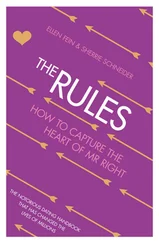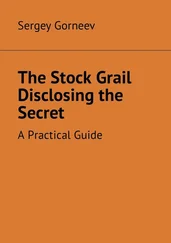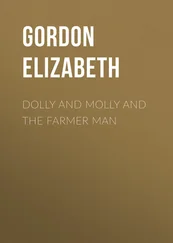Description: Topical / Subject Files on Black History (Civil Rights/Minority Issues, Civil Rights Movement, Discrimination, Education/Desegregation, Education/Race Relations, Education/Segregation, Integration, Interracial Marriage, Lynching, Race Relations, Racial Violence/Conflict, Racism in South Carolina, Segregation).
Websites with information:
http://library.sc.edu/socar/vrtcls/
Finding aid:
http://library.sc.edu/socar/vrtcls/AfAmVertical.pdf
[0019] African American Videos [videos]
Location: Media Resources Center, University of California, Berkeley, 245 Moffit Library, Berkeley, California 94720-6000
Description: Films include Clinton and the Law (Civil Rights Movement: Primary Sources, 1957; originally aired on CBS on January 6, 1957) (footage of the Rev. Paul Turner preaching brotherhood and John Kasper expounding his rhetoric of intolerance in Clinton, Tennessee); From Washington: Report on Integration (CBS Reports, 1957); The Other Face of Dixie (CBS Reports, 1962; online at http://www.cbsnews.com/videos/the-other-face-of-dixie/) (a report on progress in school integration in Clinton, Tennessee; Norfolk, Virginia; Atlanta, Georgia; and Little Rock, Arkansas; an interview with Arkansas governor Orval Faubus); Crisis: Behind a Presidential Commitment (1963) (on the crisis over integration of the all-white University of Alabama in June 1963); Kennedy v. Wallace: A Crisis Up Close (1963; re-edited) (President John F. Kennedy and Governor George Wallace during the confrontation over desegregation of Alabama schools); Ku Klux Klan: The Invisible Empire (CBS Reports, 1965) (includes an interview with KKK Imperial Wizard Robert Shelton); Forgotten Fires (1998) (a documentary about the burning of two Afro-American churches near Manning, South Carolina, in June 1995 by Ku Klux Klan members); 4 Little Girls (1998; producer/director, Spike Lee) (on the dynamiting of the 16th St. Baptist Church, Birmingham, Sept. 15, 1963, by the Ku Klux Klan); George Wallace: Settin' the Woods on Fire (2000); Inside the Ku Klux Klan: Faces of Hate (2000) (the leaders of the American Knights of the KKK and the Invisible Empire of the KKK air their views and discuss their efforts to recruit members through rallies, the Internet, and pamphlets); and Briars in the Cottonpatch (2012) (on Koinonia Farm, a small Christian community founded by Clarence Jordan in Southwest Georgia in 1942 where whites and blacks chose to live and work together as equals despite the attacks by segregationalist Georgians).
Finding aid:
http://www.lib.berkeley.edu/MRC/africanamvid2.html
[0020] African Americans and Civil Rights: Subject Clippings Files
Location: Alabama Department of Archives and History, P.O. Box 300100, 624 Washington Ave., Montgomery, AL 36130
Description: Clippings files on Civil Rights, Commission to Preserve the Peace, Desegregation, Integration and Segregation, Poll Tax, Segregation, Southern Poverty Law Center, Sovereignty Commission, and White Citizens' Council.
Websites with information:
http://www.archives.state.al.us/afro/clips.html
[0021] African Film Collection [films]
Location: Special Collections, African Studies Collection, UCT Library, University of Cape Town, Private Bag x 3, Rondebosch 7701, Western Cape, South Africa
Description: Contains a copy of the documentary film Hartseer land: een film over extreme rechts in Zuid-Afrika (My Beloved Country: The Extreme Right in South Africa), directed by Saskia Vredeveld (Amsterdam, Ciné Té Filmproduktie Amsterdam, 1991). By focusing on three specific groups – the Afrikaner Weerstandsbeweging, the Boerestaat Party, and the proponents of the independent white enclave of Orania in the Northern Cape – the film presents a cross-section of their views. These Afrikaners believe that God chose them as the superior race of Africa. Throughout, the followers of these groups present themselves as the preservers of white civilization, fighting to maintain their culture, language and religion, if necessary with force. They would like to re-establish a separate white state – the old "Boer State", now to be called "Orandee", which was destroyed by England in 1902 during the Boer War. Also contains a copy of the BBC programme No Way Back, directed by David Harrison (BBC News & Current Affairs, 1990). Reporter David Dimbleby looks at white right wing reaction to Nelson Mandela's release and subsequent violence. In this programme, representatives of the Conservative Party, the White Transport Union, the AWB and the Oranjewerkers all express their anger at the government's actions.
Websites with information:
http://sabinet.worldcat.org/title/hartseer-land-extreem-rechts-in-zuid-afrika-my-beloved-country-the-extreme-right-in-south-africa/oclc/869779403&referer=brief_results
http://www.saha.org.za/resources/docs/PDF/Publications/AV_Audit_2010.pdf
Finding aid:
http://www.lib.uct.ac.za/wp-content/uploads/asl/films2013.pdf
[0022] Papers of the Afrikaner Party, 1940-1951, PV 51
Location: Archive for Contemporary Affairs, Stef Coetzee Building, Room 109, Academic Avenue South, University of the Free State, 205 Nelson Mandela Drive, Park West, Bloemfontein 9300 South Africa
Description: After the declaration of war in September 1939, Gen. Hertzog and his followers broke away from the United Party and founded the Volks Party. The Volks Party then split up and one section joined the National Party to form the Herenigde [Re-united] National Party while the other section became the Afrikaner Party under the leadership of N.C. Havenga. During the 1948 election the HNP and AP joined forces. In 1951 the two parties amalgamated and became the National Party.
Websites with information:
http://supportservices.ufs.ac.za/content.aspx?id=196
http://supportservices.ufs.ac.za/content.aspx?id=527
http://www.archivalplatform.org/registry/entry/south_african_political_party_archives
Finding aid:
http://supportservices.ufs.ac.za/dl/Userfiles/Documents/00001/1163_eng.pdf
[0022a] The Afro Newspaper Morgue Collections, 1920s-present (bulk 1930s-1970s)
Location: Afro-American Newspapers Archives and Research Center, 2519 N. Charles Street, Baltimore, MD 21218
Description: Founded in 1892 by John H. Murphy, Sr., the Afro-American Newspaper, most commonly called the Afro, began publication with the specific mission of documenting the news in the black community of Baltimore City, Maryland. The Afro-American Newspapers Archives and Research Center holds the newspaper's "morgue" files. The photographs, newspaper clippings, correspondence, brochures, and pamphlets in the AFRO Morgue were collected by reporters and editors at the Afro for use as reference materials. The morgue is made up of more than 155,000 individual folders about people, places, issues, and events. The collection contains as many as million images and provides a rich visual record of African American life in the twentieth century. Files or materials on Ross Barnett, Bryant Bowles, busing, Ace Carter, John Birch Society, John Kasper, Ku Klux Klan, lynchings, school integration, school segregation, and school desegregation.
Websites with information:
https://marylandhcc.wordpress.com/2011/01/11/afro-american-newspapers-archives-and-research-center/
http://morgue.afro.com/AfroArchon/
http://www.loc.gov/rr/news/oltitles.html
[0022b] Louis Agassiz letters and other material, 1847-1896
Location: Rare Book & Manuscript Library, University of Illinois at Urbana-Champaign, 346 Main Library (MC-522), 1408 West Gregory Drive, Urbana, Illinois 61801
Description: Louis Agassiz (1807-1873) was a professor of natural history, first at the University of Neuchatel, Switzerland, and later at Harvard University, and the founder of the Museum of Comparative Zoology at Harvard. Includes 30 letters written by Agassiz.
Читать дальше












